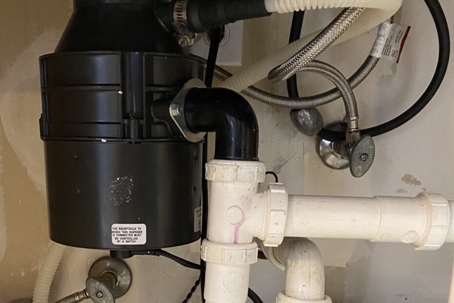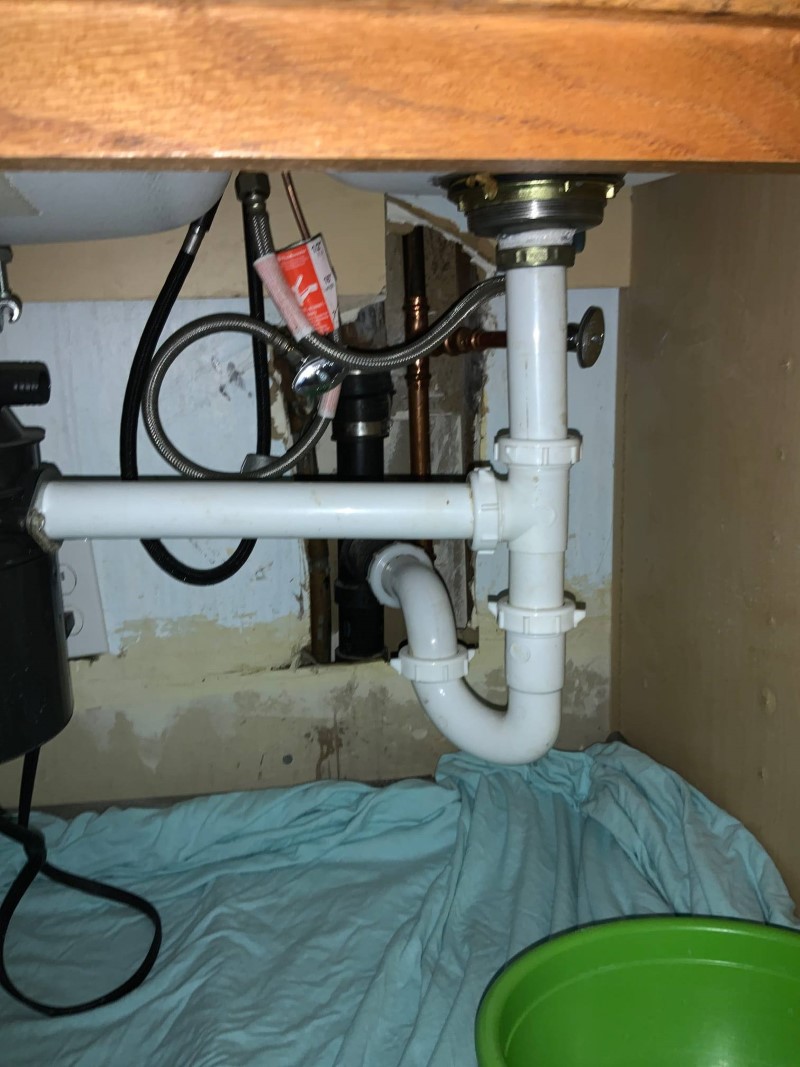We have discovered the article relating to The Handy Guide To Fixing Your Garbage Disposal Leaking below on the web and decided it made good sense to share it with you on this site.

Garbage disposals are crucial kitchen home appliances that help in disposing of food waste effectively. Nonetheless, a dripping garbage disposal can be an irritating and untidy problem to take care of. Thankfully, several leaks can be dealt with quickly with a couple of easy actions. In this article, we will review how to take care of a dripping garbage disposal properly.
Introduction
Garbage disposals are mounted under cooking area sinks and are designed to shred food waste into smaller pieces, permitting it to go through the plumbing system conveniently. While these gadgets are typically trustworthy, leaks can occur in time because of deterioration, loose links, or damage to the device.
Step-by-Step Guide to Taking Care Of a Leaking Waste Disposal Unit
Shut off the Power
Before attempting any kind of repairs, guarantee that the power to the waste disposal unit device is switched off to avoid the danger of electrical shock.
Locate the Leak
Recognize the precise location of the leak and identify the reason
Tighten Connections
Make use of a wrench to tighten up any kind of loosened links in between the disposal system and the plumbing system.
Replace Seals or Gaskets
If the leak is due to used seals or gaskets, get rid of the old elements and replace them with new ones.
Patching Splits or Openings
For fractures or holes in the disposal device, use epoxy or a suitable patching product to seal the damaged location.
Determining the Resource of the Leak
Before trying to repair a dripping garbage disposal, it is essential to recognize the source of the leakage. This can usually be done through visual examination or by carrying out straightforward tests.
Visual Assessment
Examine the waste disposal unit device carefully for any kind of indicators of water leak. Pay attention to locations around seals, gaskets, and connection points.
Checking for Leakages
One way to check for leakages is by running water via the disposal system and checking for any type of noticeable signs of leakage.
Usual Sources Of Leakages in Garbage Disposals
Worn Seals and Gaskets
Seals and gaskets play a vital function in stopping water from dripping out of the garbage disposal. With time, these elements can weaken, resulting in leakages around the disposal unit.
Loose Links
The connections between the waste disposal unit and the plumbing system can end up being loosened over time, triggering water to leakage out throughout operation.
Fractures or Openings in the Disposal Device
Physical damages to the garbage disposal, such as cracks or openings in the real estate, can also result in leaks.
Tools and Materials Needed for Dealing With a Leaking Garbage Disposal
Before starting the fixing procedure, gather the necessary devices and materials, including a screwdriver, flexible wrench, plumbing technician's putty, replacement seals or gaskets, and epoxy or patching product for repairing cracks or openings.
Testing the Waste Disposal Unit After Repair Work
As soon as the repair service is complete, check the garbage disposal by running water with it to ensure that the leak has actually been dealt with.
Preventive Upkeep Tips to Avoid Future Leakages
To stop future leaks, it is important to perform routine upkeep on your waste disposal unit. This includes keeping it clean, avoiding putting non-food products or hard objects down the disposal, and occasionally looking for leaks or other concerns.
Final thought
To conclude, taking care of a dripping garbage disposal is a fairly simple process that can be completed with fundamental tools and materials. By complying with the steps outlined in this article and exercising preventative maintenance, you can maintain your waste disposal unit in good working condition and avoid pricey repairs in the future.
What to Do About a Leaking Garbage Disposal
A leaking garbage disposal often goes unnoticed until you confront a sopping cabinet, a foul-smelling puddle, or an audible drip-drip-drip from the unit. The fix can be frustrating, too, because the leak can stem from a number of components in the system. Fortunately, with a little sleuthing, you can zero in on the leak and—depending on the exact location—stop the icky oozing and repair the component that caused it. Worst case scenario, if it turns out that the garbage disposal must be replaced, installing a new one is a reasonable do-it-yourself task for those with basic plumbing skills. Read on to keep the cash you’d otherwise hand over to a pro.
Prepare to find the leak
Prior to testing the garbage disposal for leaks, unplug it at the wall outlet and turn off the power from the breaker box to prevent electrical shock. Then insert a watertight sink stopper into your sink drain and wipe the unit dry with a clean cloth. In any handy container, mix a few drops of food coloring into a few cups of water, and pour the dyed water onto the sink stopper to help you locate the leak.
Investigate the source
the top, where the disposal meets the sink drain the side, where the dishwasher hose or main drain pipe connects to the disposal or the bottom of the unit Inspect each of these locations while gliding a light-colored rag over the unit; the dyed water will readily show on the rag and reveal the location of the leak. If a leak isn’t immediately apparent, remove the sink stopper and pour a few more cups of dyed water down the sink drain, then check for leaks again. Leaks near the top of the unit are more likely to show themselves while the sink is plugged, while side and bottom leaks are more noticeable while the sink is unplugged.
The metal sink flange that sits directly inside the sink drain is typically sealed around the top with plumber’s putty (a clay-like sealant) and then secured from under the sink with bolts. If the plumber’s putty deteriorates, or the bolts loosen, the flange can no longer form a watertight seal between the sink drain and the disposal—which could cause a leak at the top of the unit.
To reseal the leaky flange, you must first detach the garbage disposal. Start by loosening the screws securing the main drain pipe to the disposal, then loosen the screws in the metal clamp securing the dishwasher hose to the disposal and detach the drain pipe and dishwasher hose from the disposal. Loosen the screws in the mounting ring that connects the disposal to the metal mounting assembly beneath the sink, then pull down the disposal and carefully set it on a clean, dry surface. Loosen the bolts in the mounting assembly with a wrench, then pull down the mounting assembly and set it near the disposal.

Do you appreciate reading up on Tips on Fixing a Leaking Garbage Disposal? Place a remark further down. We'd be interested to know your views about this write-up. In hopes that you visit us again before long. Please set aside a second to distribute this blog if you appreciated it. Thanks a bunch for your time. Don't hesitate to check our blog back soon.
Schedule Estimate